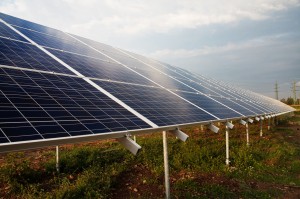In September 2012, the European Commission launched an antidumping investigation into the import of Chinese solar panels and key components. The investigation centres on claims made by a group of solar companies from EU countries, led by German company SolarWorld, that Chinese solar companies had been selling solar panels in Europe well under their market value. Chinese companies reacted by calling on their government to retaliate against the investigation. Marc Vanheukelen, head of EU trade commissioner Karel de Gucht’s cabinet, responded saying, “We may take to court countries that we don’t think are playing fairly,” in a speech to Brussels, sparking fears of a trade war.
According to William Perry, an international trade law and customs partner at the firm of Dorsey & Whitney, this war has been raging in the US for more than a year, and has already spread to Europe. He has won more than 50 antidumping cases for US importers and Chinese exporters. In the Solar Cells case, he represented Upsolar and was successful in persuading the ITC to lift the critical circumstances determination. Below he gives detailed analysis of how this trade war began, which provides essential insight into how events may unfold in Europe.
 We have a trade war with China in the renewable energy area in the United States, which has morphed into a worldwide trade war pitting China against the US, EC and now India. The date the trade war started was 19th October, 2011, when Solar World America filed major antidumping (AD) and countervailing duty (CVD) petitions on Crystalline Silicon Photovoltaic Cells, Whether Or Not Assembled into Modules from China (Solar Cells from China) at the Commerce Department (Commerce) and the US International Trade Commission (ITC). In response to the US Solar Cell cases, the Chinese government launched its own AD and CVD cases aimed at US polysilicon exports to be used in the Chinese solar cells.
We have a trade war with China in the renewable energy area in the United States, which has morphed into a worldwide trade war pitting China against the US, EC and now India. The date the trade war started was 19th October, 2011, when Solar World America filed major antidumping (AD) and countervailing duty (CVD) petitions on Crystalline Silicon Photovoltaic Cells, Whether Or Not Assembled into Modules from China (Solar Cells from China) at the Commerce Department (Commerce) and the US International Trade Commission (ITC). In response to the US Solar Cell cases, the Chinese government launched its own AD and CVD cases aimed at US polysilicon exports to be used in the Chinese solar cells.
Although these petitions were filed in October 2011, there were signs that a case was coming because in September 2010, the United Steel Workers Union had filed a massive anti-subsidy petition against Chinese renewable energy products with the United States Trade Representative’s Office (USTR). As a result of that petition, throughout 2011, there were strong rumblings in WashingtonDC about the subsidies the Chinese Government was giving to the Chinese renewable energy/solar sector. Then in the summer of 2011, Solyndra, a company which had received USD 500 million in guaranteed loans from the US Government, declared bankruptcy blaming the Chinese Government and Chinese solar cell companies.
In order to win an AD and CVD case, a US industry must establish dumping and subsidisation at Commerce and injury to the US industry at the ITC. After the petition was filed in October 2011, the ITC issued a preliminary injury determination in December 2011. The case then moved to Commerce.
Despite all the noise about subsidies from the Chinese Government to Chinese solar cell producers, in its mid-March preliminary CVD determination Commerce found that those subsidies were equivalent to only 3.6 per cent of the entered value, the countervailing duty rate to offset Chinese Government subsidies on imports of solar cells from China.
But on 25th May, 2012 Commerce issued its preliminary determination in the AD case with antidumping rates ranging from 31 per cent to 250 per cent for Chinese companies that did not participate at the Commerce Department.
These AD rates were not based on prices and costs in China. In normal cases, dumping is defined as sales in the United States at prices below those in the home/foreign market or below the cost of production. Commerce, however, treats China differently as a nonmarket economy country. It therefore collects factors of production—how much raw materials, such as polysilicon, labour and electricity, the company uses to produce a certain amount of photovoltaic/solar cells—and then goes to a third market economy country, usually India or Thailand, to value those factors of production. Based on these findings Commerce calculates a cost, which it compares to the exporter’s prices in the United States, to determine whether there is a dumping margin, a difference between the US price and calculated cost.
In the US Solar Cells antidumping case, the real fight was not over prices and costs in China, but which surrogate country to use—India with a mature solar cell industry or Thailand with a much younger industry. Commerce agreed with the US industry and used Thailand.
The real target of US AD and CVD cases is not the Chinese companies. The real target is US companies that import products that are subject to AD and CVD cases. In the Solar Cells case, a number of the US importers are subsidiaries of Chinese companies, but in addition, many US importers are small and medium independent US companies.
In the Solar Cells case, the US importers’ pain was palpable because in October 2011 petitioners had alleged critical circumstances. Under critical circumstances, AD and CVD duties can be levied on imports 90 days prior to Commerce’s preliminary determination if Commerce finds that the Chinese companies knew they were dumping and that there has been a surge in imports after the petition was filed, as compared to the period before the petition was filed and the ITC makes an affirmative critical circumstances decision. The Petitioners filed in October 2011, knowing that pursuant to Section 1603 Treasury Cash Grant Programmes, contracts had to be signed by 31st December, 2011 for US developers/installation companies to take advantage of the US subsidy programmes for the installation of the solar cell panels.
Many US importers simply did not understand that they were the real target of the AD and CVD case. They negotiated contracts in late 2011 and continued to import substantial quantities of solar cells until the AD preliminary determination at the end of May. Those importers, many of which are SMEs, faced an estimated liability for antidumping duties of USD 100 million and bankruptcy.
At the ITC hearing in October 2012, we continued fighting the critical circumstances decision at the ITC. For critical circumstances to take effect, the ITC must find that increased imports undermined the remedial effect of any AD or CVD order. The objective of critical circumstances is to prevent stockpiling. We argued that since the imports were made in response to contracts there was no stockpiling and thus the remedial effect of the orders would not be undermined.
On 7th November, 2012, the ITC voted affirmatively in the Solar Cells final injury determination, but negatively as to critical circumstances. As a result, US importers liability for past imports prior to Commerce preliminary determinations was lifted.
 In December 2012, the ITC’s affirmative injury determination was published in the Federal Register followed by AD and CVD orders against Solar Cells from China. US AD and CVD orders can stay in place for five to 30 years. In the CVD order, the present CVD rates for Chinese exporters range from 14.78 per cent to 15.97 per cent and the present AD rates in the AD order for Chinese exporters range from 18.29 per cent to 250 per cent.
In December 2012, the ITC’s affirmative injury determination was published in the Federal Register followed by AD and CVD orders against Solar Cells from China. US AD and CVD orders can stay in place for five to 30 years. In the CVD order, the present CVD rates for Chinese exporters range from 14.78 per cent to 15.97 per cent and the present AD rates in the AD order for Chinese exporters range from 18.29 per cent to 250 per cent.
More importantly, once the ITC’s final determination was published in the Federal Register, US importers face retroactive liability for increased AD and CVD rates on solar cell imports after the publication date of the ITC decision. If AD and CVD rates go up in the subsequent review investigation, which will start up in December 2013, US importers will be retroactively liable for the difference plus interest.
One bright spot in this case, however, was the third country loophole. If the Solar Cells are produced in third countries, such as Taiwan, and installed in the panels and modules in China, those panels and modules from China will be not be subjected to AD and CVD duties. But Commerce and US Customs require very strict certification from the Chinese company and the US importer that prove the solar cells in the Chinese modules and panels and are not Chinese produced.
In addition to the Chinese companies and the US importers, the next victim is US exporters. As stated above, in retaliation for the US AD and CVD cases against solar cells from China, the Chinese Government has initiated AD and CVD cases against the United States on approximately USD 2 billion of polysilicon being exported to China to be used to produce the Chinese solar cells imported back into the United States. The Chinese Government is also looking at critical circumstances so it can hit Chinese importers retroactively for past imports. We should hear about the Chinese decision in February 2013.
Meanwhile, the EC has started up Solar Cell AD and CVD investigations against the Chinese companies. EC investigations are different from US cases because it is very difficult for state-owned companies to get their own AD rates in EC cases. Also EC cases focus on producers, where US cases focus on exporters. The Chinese Government has also started up antidumping and countervailing duty cases targeting EC polysilicon. This is truly a trade war.
Finally, the trade war has spread with India announcing in November 2012 the initiation of an AD case against Chinese solar cells. The trade war has also spread into other renewable energy products with Commerce announcing in a final December 2012 determination on WindTowers from China CVD rates ranging from 21 per cent to 34 per cent, and AD rates ranging from 44 per cent to 70 per cent.
From 1980 to 1987, William Perry was an attorney in the Office of General Counsel, US International Trade Commission (ITC), and in the Office of Chief Counsel and Office of Antidumping Investigations, US Commerce Department. For more information on the Solar Cells case and other trade and litigation actions against China, please read Mr Perry’s blog.


Recent Comments